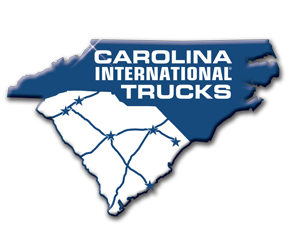All You Need to Know About Your Commercial Truck Lights
Whether you have one truck or multiple trucks on your fleet, you must ensure that your rig’s lighting system works smoothly. Commercial truck lights play an essential part in keeping your deliveries safe, which is why you will want to take all possible measures to ensure they are bright, functional, and meet the mandatory safety guidelines for trucks. Problems with your lighting system can mean violation of traffic rules, and if your driver gets pulled over by roadside inspection, you might end up paying a hefty fine. To skip the hassle and maintain legal compliance, you will want the suitable exterior and interior lights for your vehicle.
Carolina International Trucks is your local truck dealership in South Carolina. Our experts have created this guide to discuss a few things about your commercial truck’s lighting system.
1. Lights Boost Your Safety
Driving a commercial truck in low-visibility conditions like fog and rain can be challenging and unsafe. Each truck will need bright and clear lights to help your driver see the road ahead so they can avoid obstacles or potholes and notice any pedestrians and stray animals darting in their path.
Lights also allow your vehicles to be more visible on the road. If other motorists fail to see your trucks clearly, it can lead to massive consequences. To avoid this, you must ensure that each commercial truck is visible from at least 500 meters.
2. Lights Make You Compliant with the Law
You must adhere to the lighting regulations for commercial vehicles when your vehicles are on the road. This means installing DOT-approved lights on your rig and having fully functional brake lights, hazard lights, taillights, and most importantly, headlights.
Headlights help illuminate the road ahead and make it safer for your rig to continue traveling. On the other hand, taillights help notify the vehicles behind your model to maintain a suitable following distance. Brake lights help signal motorists behind your truck that your driver intends to stop, which is why they are slowing down. Conversely, turn signals help alert other drivers that your driver plans to turn. However, emergency lights signal that a driver is struggling with a mechanical issue and wants to pull over as soon as possible.
Not having sufficient lights on your commercial truck can land you in trouble, so check with your local authorities for the latest updates before your vehicle hits the road.
3. Get the Right Lights for Your Commercial Truck
You will want to replace any faulty lights as soon as possible. But installing DOT-certified lights alone won’t do—you will also want to ensure that the lights are well-matched to the operating voltage of your commercial trucks. A 6-volt light won’t be compatible with a 12-volt lighting system and vice versa. Spend time understanding the requirements of your vehicle and then finalize your decision.
4. Tips to Maintain Your Lights
Before each trip, check to see that your lighting system is working smoothly. Test your headlights, brake lights, corner lights, and emergency lights, and change any light that’s dull or broken. It’s good to replace lights in pairs—if a bulb is faulty, you will want to replace the other one, too. This helps maintain a balance and avoid disparity in the color and intensity of your lights.
We hope this guide helps boost the visibility of your commercial truck fleet. If you need more advice or want to buy genuine and compatible parts for your vehicle, visit Carolina International Trucks. We have multiple dealerships throughout South Carolina, and we proudly serve those from Columbia, so stop by today.

